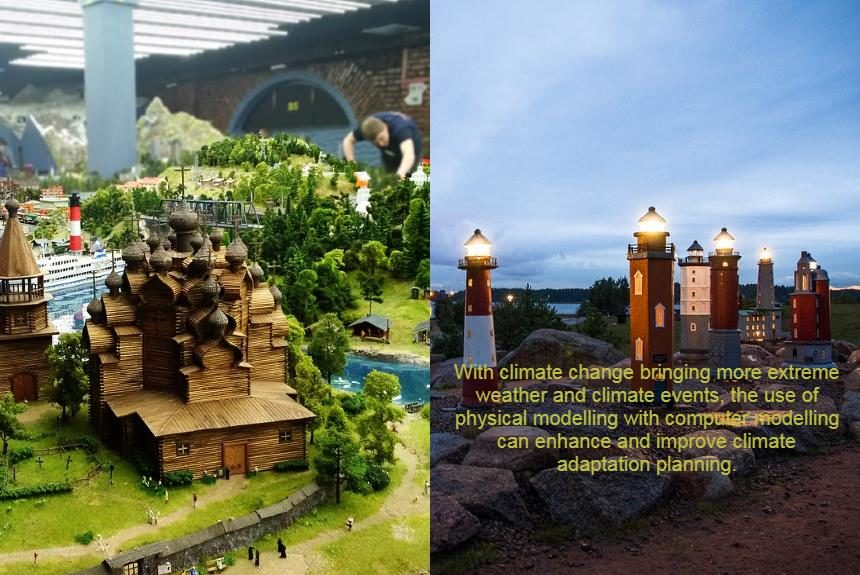Physical modelling is largely applied in hydraulics engineering and can be scaled up and down. It allows for analysing and simulating various processes in controlled environments that are as close as possible to reality.
As climate change is projected to bring more extreme natural events, physical modelling will be an important tool to test climate adaptation designs and scenarios.
A UK-based civil engineering and environmental hydraulics organisation has been providing scale models for their various projects, such as breakwaters to beaches, turbines to tsunamis, and pumping stations to fish passes, the news article says.
Physical modelling can be scaled up or down depending on structural design requirements for small geographical areas – breakwater stability on port or harbour areas, erosion and accretion of beach areas, to really large ones like sediment transport along the coastline and wave climate approaching a port.
Advantages of modelling over computational techniques
Although developments in computer power are predicted to make physical modelling obsolete, this engineering company still widely uses it today. In the last ten years, they have used it for an average of 28 modelling projects per year for coastal and offshore projects.
Here’s why physical modelling is popular:
- Physical modelling requires a few simplifying assumptions as nature takes its course;
- It is still more cost-effective and efficient to use it than using numerical computer models;
- Immediate visual feedback is provided, and uncertainties are reduced as models are less reliant on empirical formulas or calculations;
- Users have a high degree of control over the experiments, allowing them to make quick changes between or during tests to maximise benefits;
- It provides certainty with the results obtained from the test.
With climate change bringing more extreme weather and climate events, physical and computer modelling can enhance and improve climate adaptation planning.
Through modelling, the risks and impacts of extreme climate conditions can be simulated to assess their impacts on infrastructure and thereby improve infrastructure or systems resilience.
Their company also support climate adaptation projects and green engineering projects in the UK and around the world.
The future is bright for physical modelling (2020, March 12). HR Wallingford, Working with water. News. Retrieved from http://www.hrwallingford.com/news/the-future-is-bright-for-physical-modelling



Leave a Reply